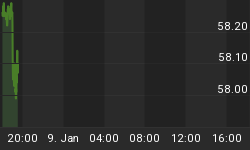An interesting article on MarketWatch today caught my attention. The subhead is the money quote, "Back in April every economist in a survey thought yields would rise. Guess what they did next."
Every? The article refers to 67 economists polled by Bloomberg, all of whom would seem to believe in the quantity theory of money. This means they believe a rising money supply causes rising prices. That means they think the bond market expects inflation. Which means they expect the interest rate to rise, because investors will somehow demand more.
It didn't happen because every assumption in that chain is false.
Many people also expect interest rates to rise after the Fed's bond buying program -- quantitative easing -- ends. Let's take a look at the yield on the 10-year US Treasury bond from 1981 through today. This graph is courtesy of Yahoo Finance, though I have labeled it as carefully as I could for the three rounds of QE so far.

By zooming out to capture the entire time period of the bull market in bonds -- i.e. the period of the falling interest rate -- we can put QE in perspective.
The 10-year US Treasury bond now yields 2.21%. For reference, the 10-year German bund is 0.87% and the 10-year Japanese government bond is 0.48%.
It's obvious from the chart, that QE is not the cause of today's interest rate near 2%.
MarketWatch implicitly acknowledges that the conventional theory is 100% wrong. I have published an alternative, The Theory of Interest and Prices in a Paper Currency. It's a long read in seven parts, but I have tried to keep it accessible to the layman.
Spoiler alert: I think interest rates will keep falling to zero, though of course there can be corrections.
The interest rate is pathological. It's like an object that gets too close to a black hole. Once it falls below the event horizon, then a crash into the singularity of zero is inevitable.
You are cordially invited to The Gold Standard: Both Good and Necessary, in New York on Nov 1. There hasn't been a real recovery from the crisis of 2008, and there won't be until we return to the use of gold as money. Please come to this event to hear Andy Bernstein present the moral case for capitalism, and Keith Weiner present the case for the gold standard as the monetary system of capitalism.















